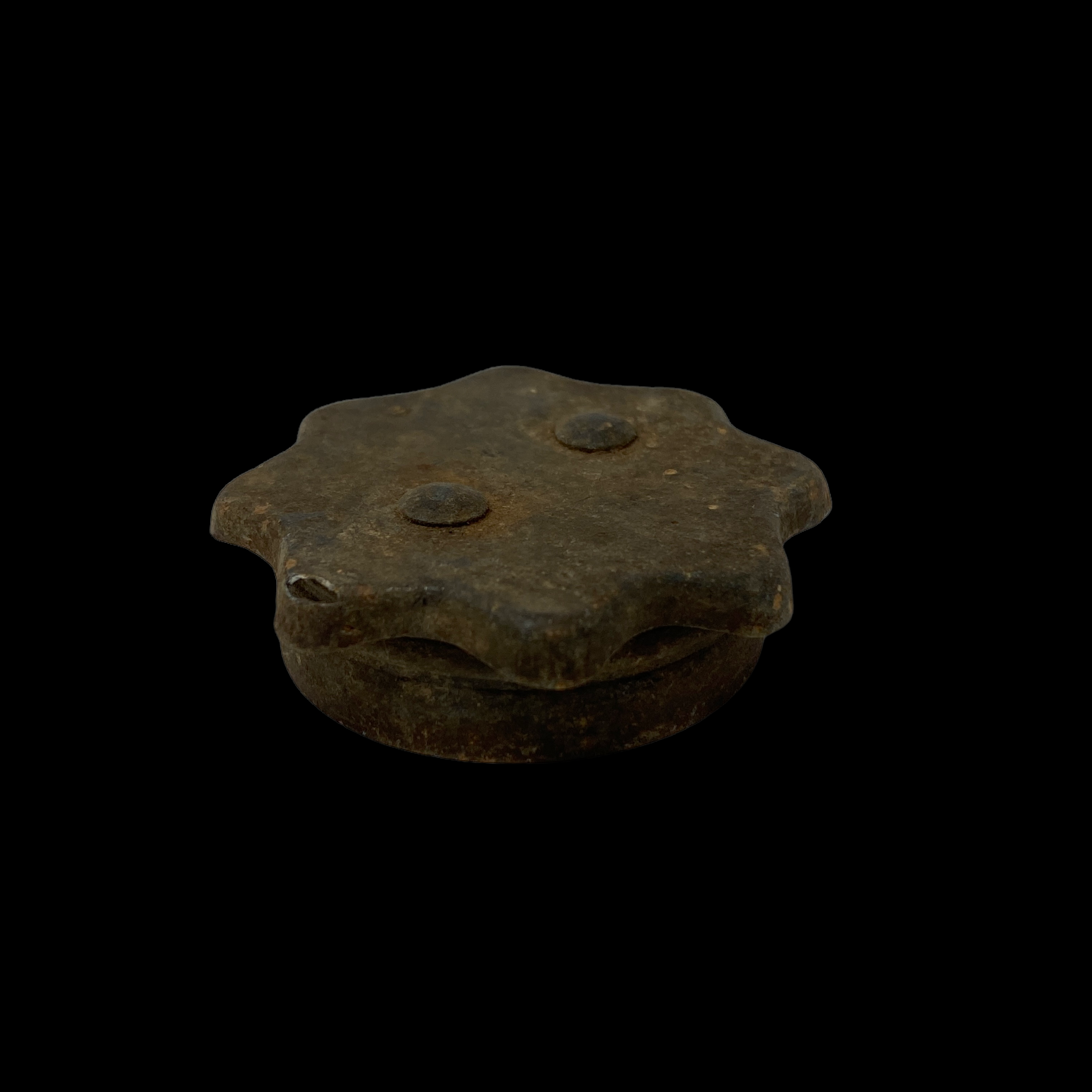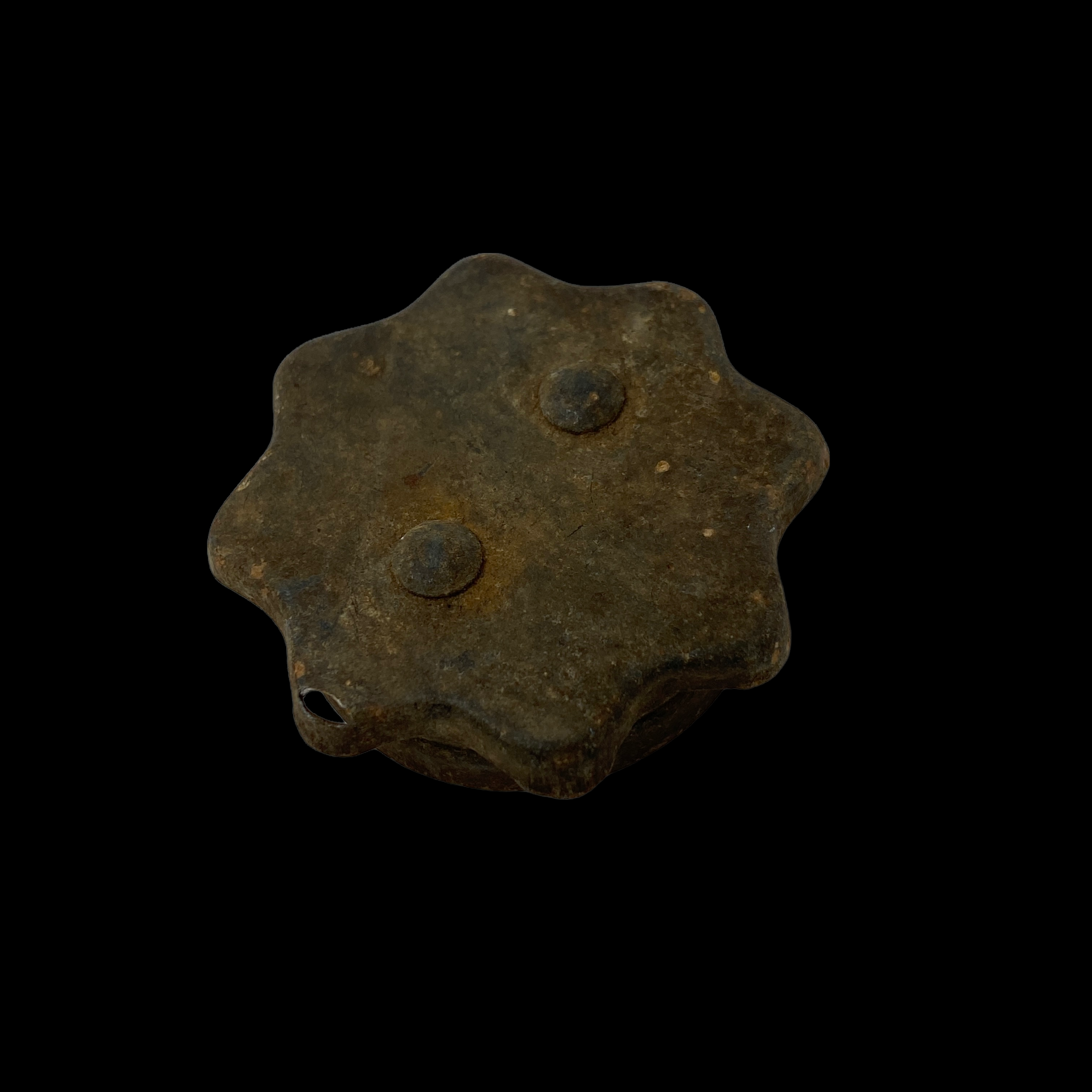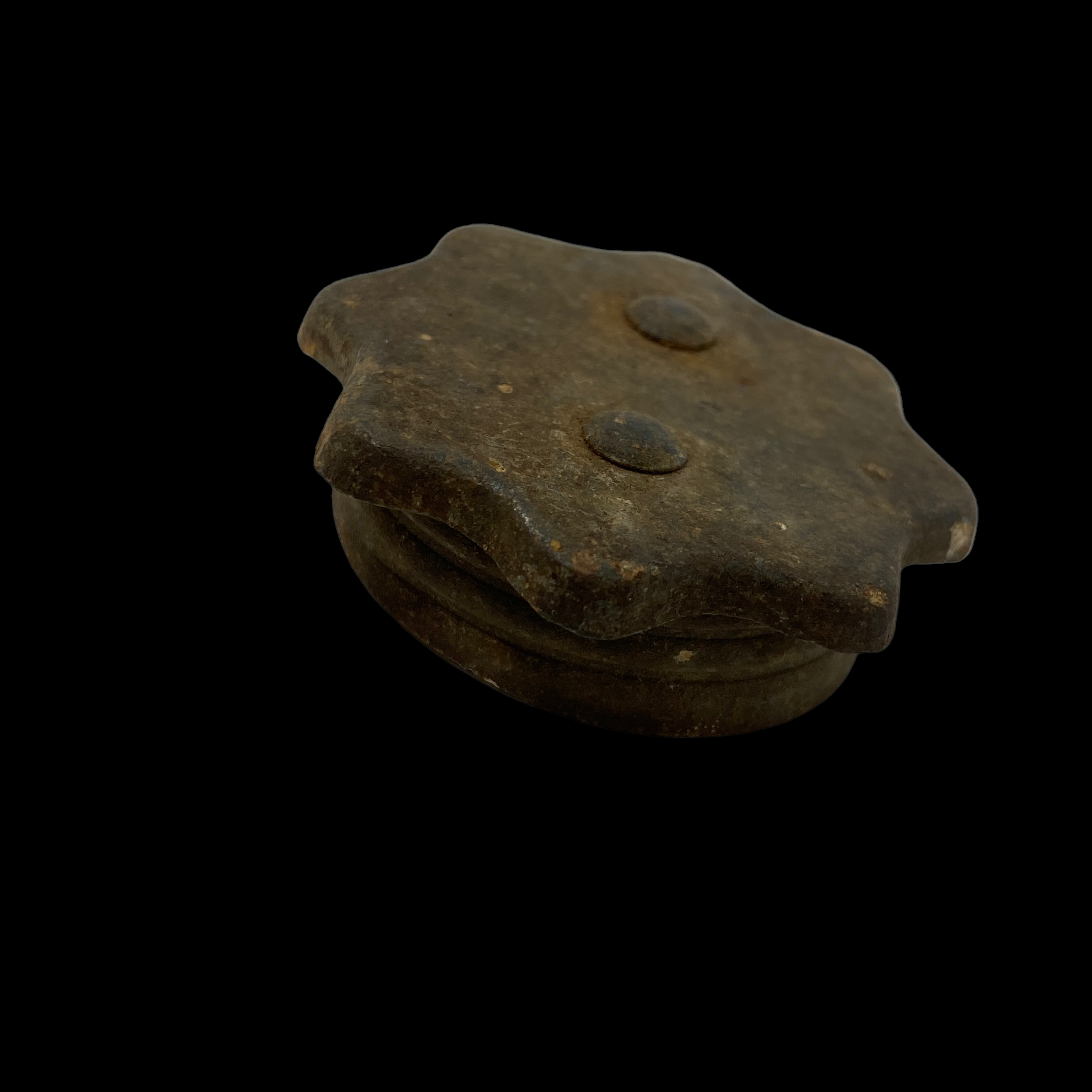German M17 Grenade Cap - Excavated from "Hundred Day Offensive" Western Front Battlefield







German M17 Grenade Cap - Excavated from "Hundred Day Offensive" Western Front Battlefield
Comes with C.O.A.
This incredible piece of World War I history was excavated and preserved off a WWI battlefield. This incredible German grenade cap is from the German Model 1917 (M17): Stielhandgranate 17 stick grenade.
The Stielhandgranate is the German term for "stick hand grenade" (alternatively: "shaft hand grenade") and generally refers to a prominent series of World War I- and World War II-era German stick grenade designs, distinguished by their long wooden handles, pull cord arming and cylindrical warheads. The first models were introduced by the Imperial German Army during World War I
The base of the Stielhandgranate's M17 handle was slightly redesigned, and a metal cover cap was introduced. This cap concealed the porcelain bead and pull cord, allowing it to simply rest freely inside of the handle.
Because these stick grenade caps had to be screwed off by the German soldier in battle these caps usually were drooped at the exact spot they were then tossed and thrown at American, British, Canadian, or French soldiers.
In World War I, hand grenades were also known as “hand bombs.” The general philosophy for their use in the fighting armies was that grenades could kill the enemy underground or behind cover. They could also force the enemy into the open, providing targets for rifle and machine gun fire.
Offensive grenades used concussion, or shock-waves, to wound, while defensive grenades exploded, scattering shell fragments. Gas, smoke and illuminating grenades were also used in World War I. These grenades were made of brass, iron and steel, some with handles of wood and even cardboard.
At the start of the war the Germans only trained special infantry troops, or “pioneers,” to use hand grenades. Soon two types of grenades became standard for the Germans: stick (with the explosive can attached to a wooden handle) and egg (because it resembled an egg). German stick grenades were also called “potato mashers” again for their shape.